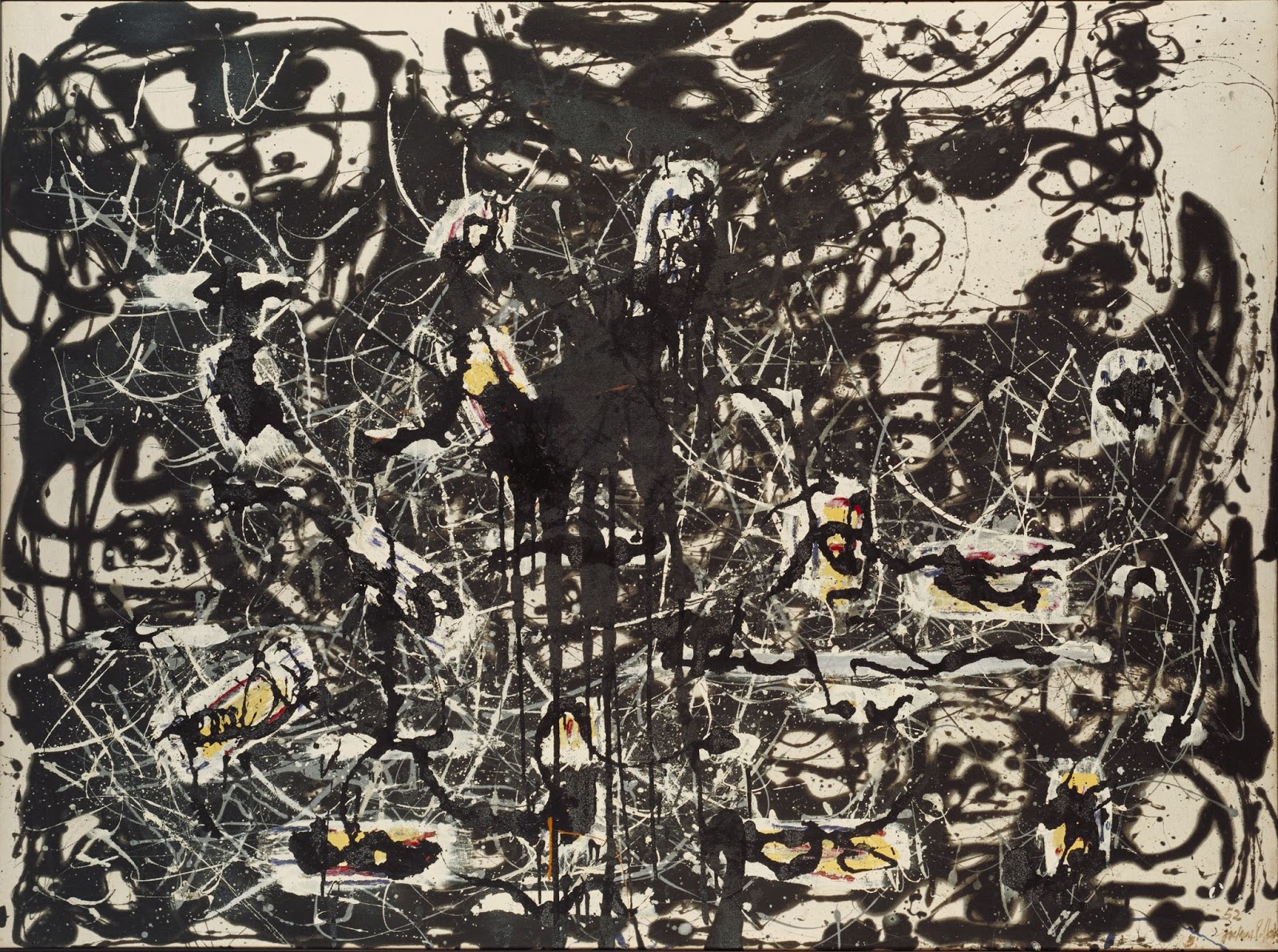25/07/15
Jackson Pollock: Blind Spots
Tate Liverpool
30 June – 18 October 2015
In autumn 1950, on the evening that
photographer Hans Namuth finished shooting his second short film of Jackson
Pollock (1912-56) working in his Long Island studio, and after two years’
abstinence, the artist, best known for his drip paintings, picked up the bottle
again. That
same year, Pollock visited the exhibition Black or White Paintings by European
and American Artists at the Kootz Gallery, New York, which included works by Willem
de Kooning, Robert Motherwell and Joan Miró. He probably also saw the
exhibition of black and white paintings by Franz Kline at the Charles Egan
Gallery. What happened next might, therefore, not come as such a great
surprise: in a period of great personal blackness, and in an artistic context
where monochromatic studies were de rigueur, Pollock, too, turned to working
solely in black. The following year, between May and September, he produced 28
such paintings, with 16 more in 1952 and a further – and final – 10 in 1953.
Robert Goodnough may have favourably described Number 32 1950, the first black
painting, as showing “open black rhythms … dance in disturbing degrees of
intensity, ecstatically energising the powerful image in an almost hypnotic way”, but not everyone shared his good opinion.

To read the rest of this review, please go to: http://www.studiointernational.com/index.php/jackson-pollock-blind-spots-review-tate-liverpool